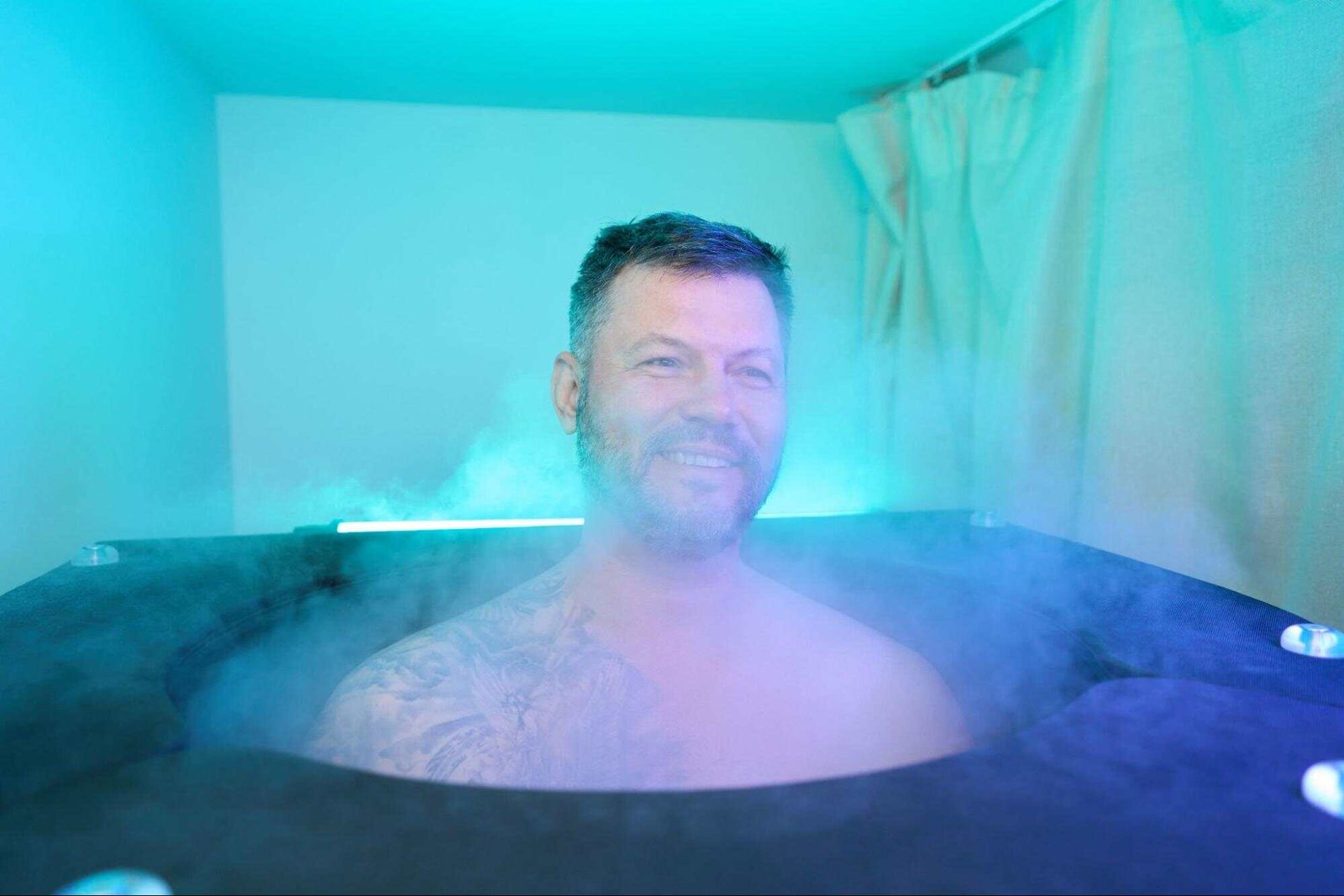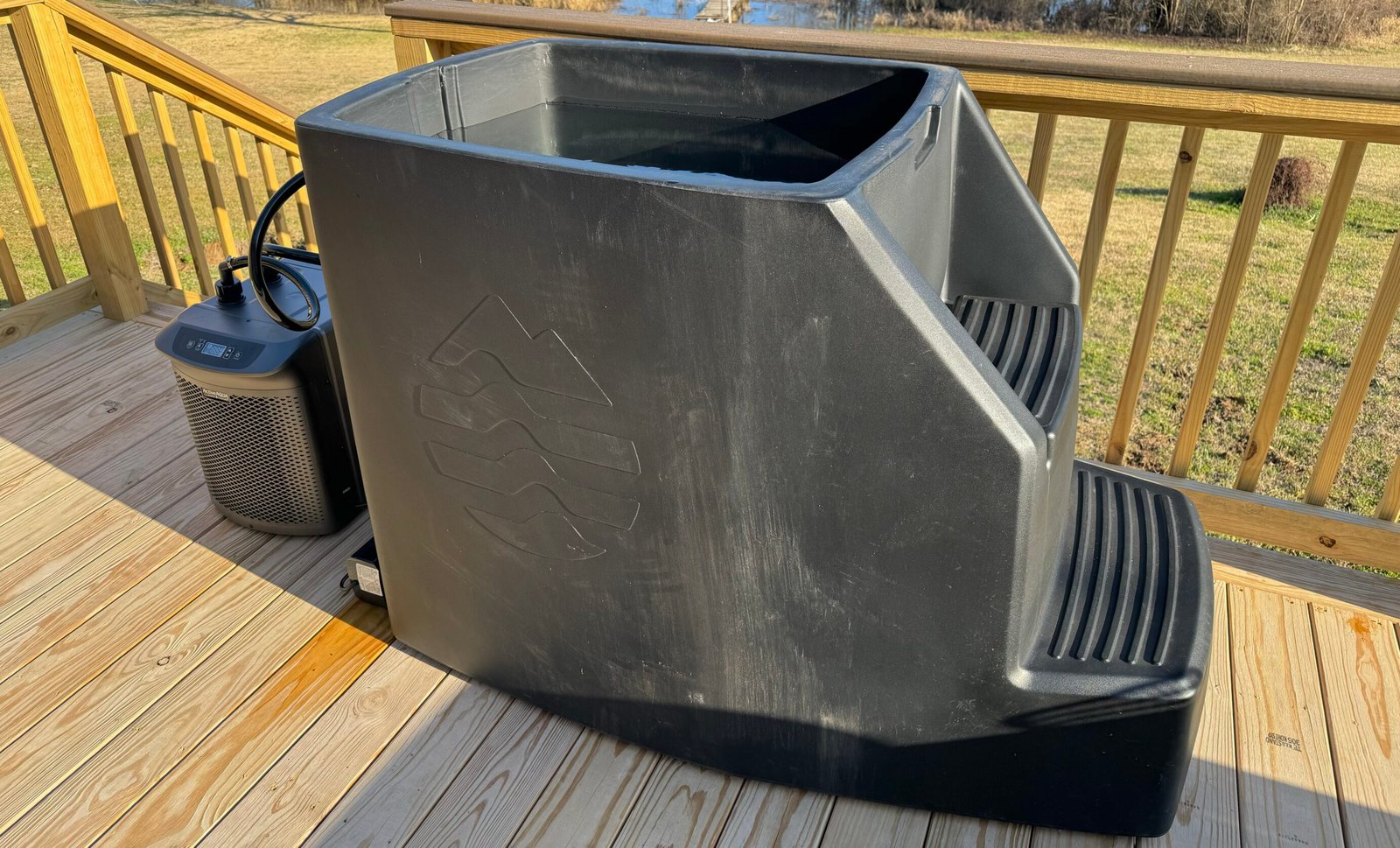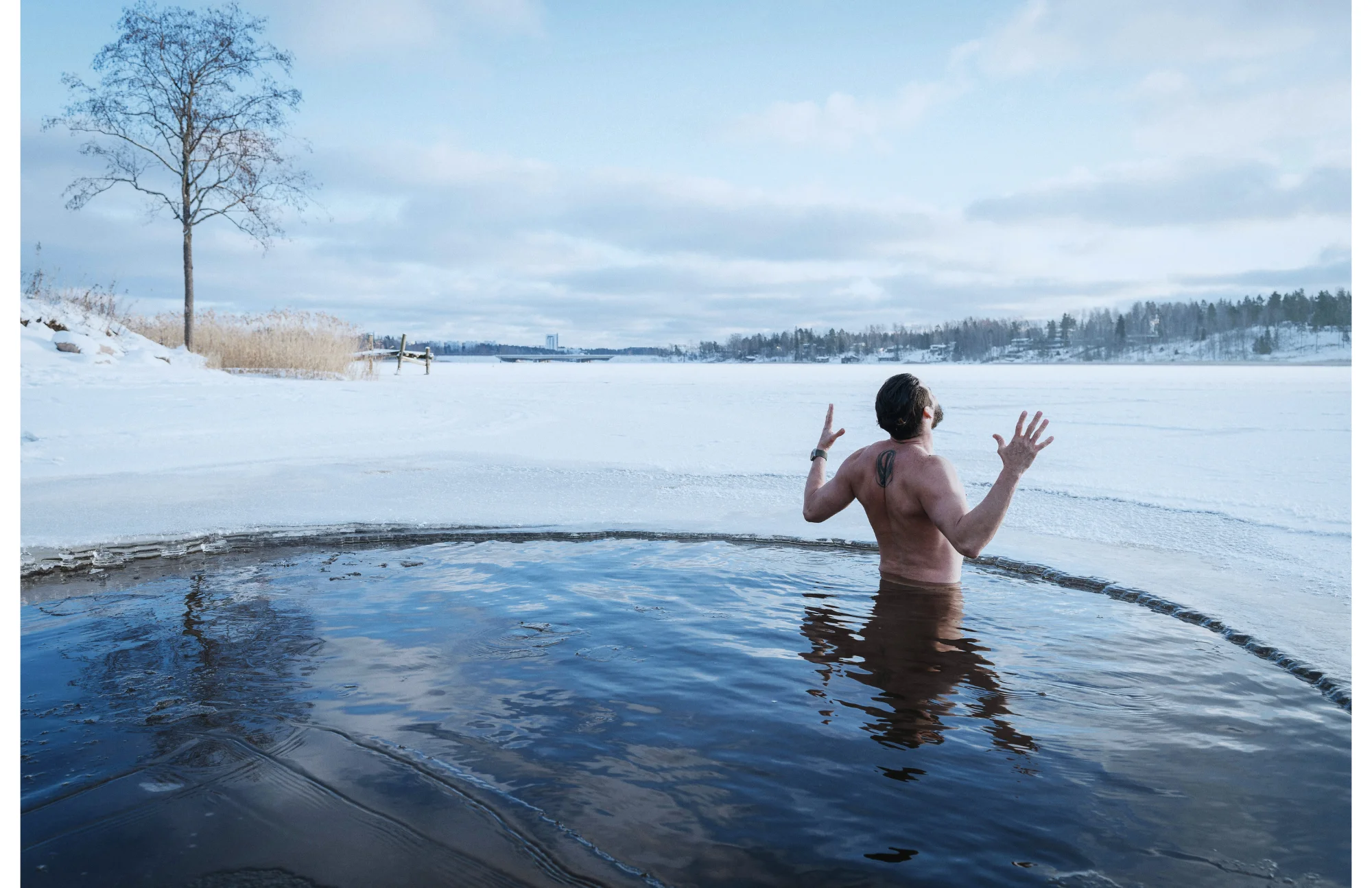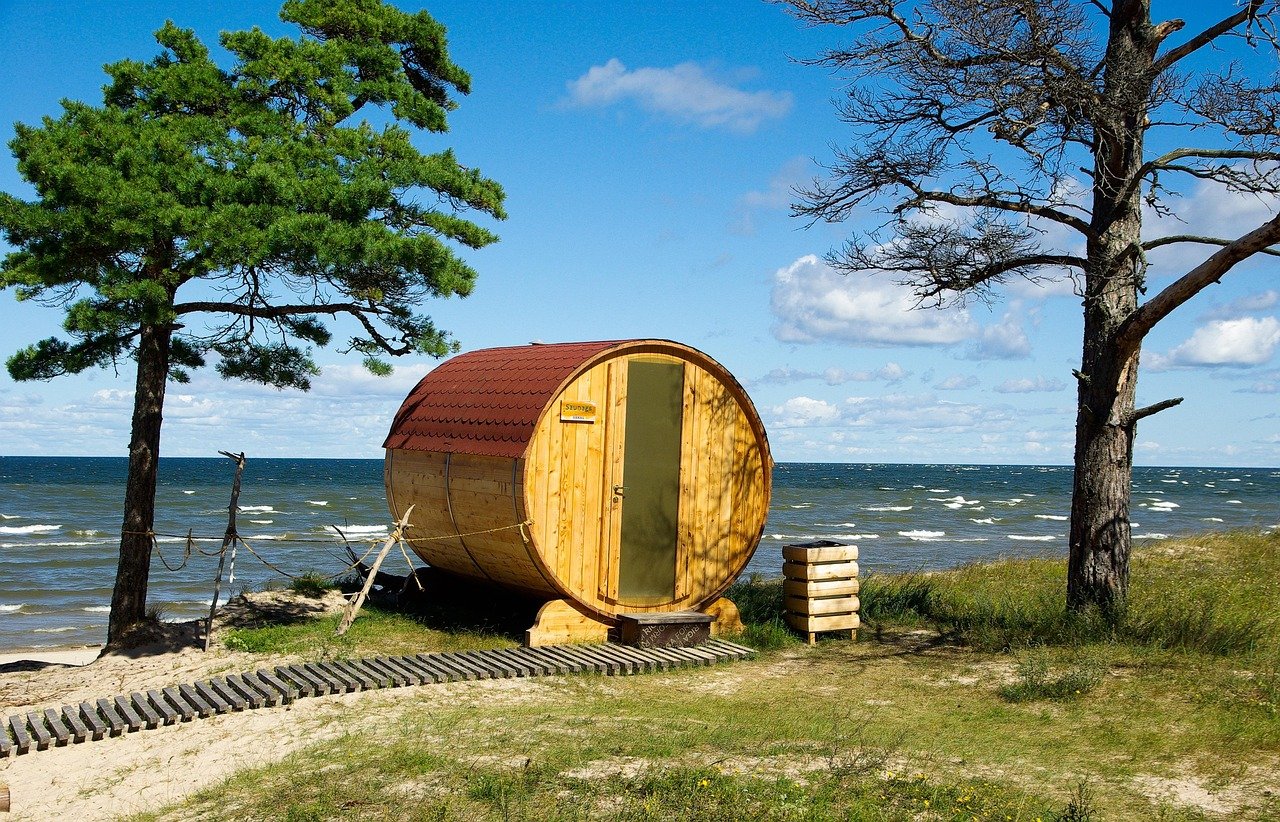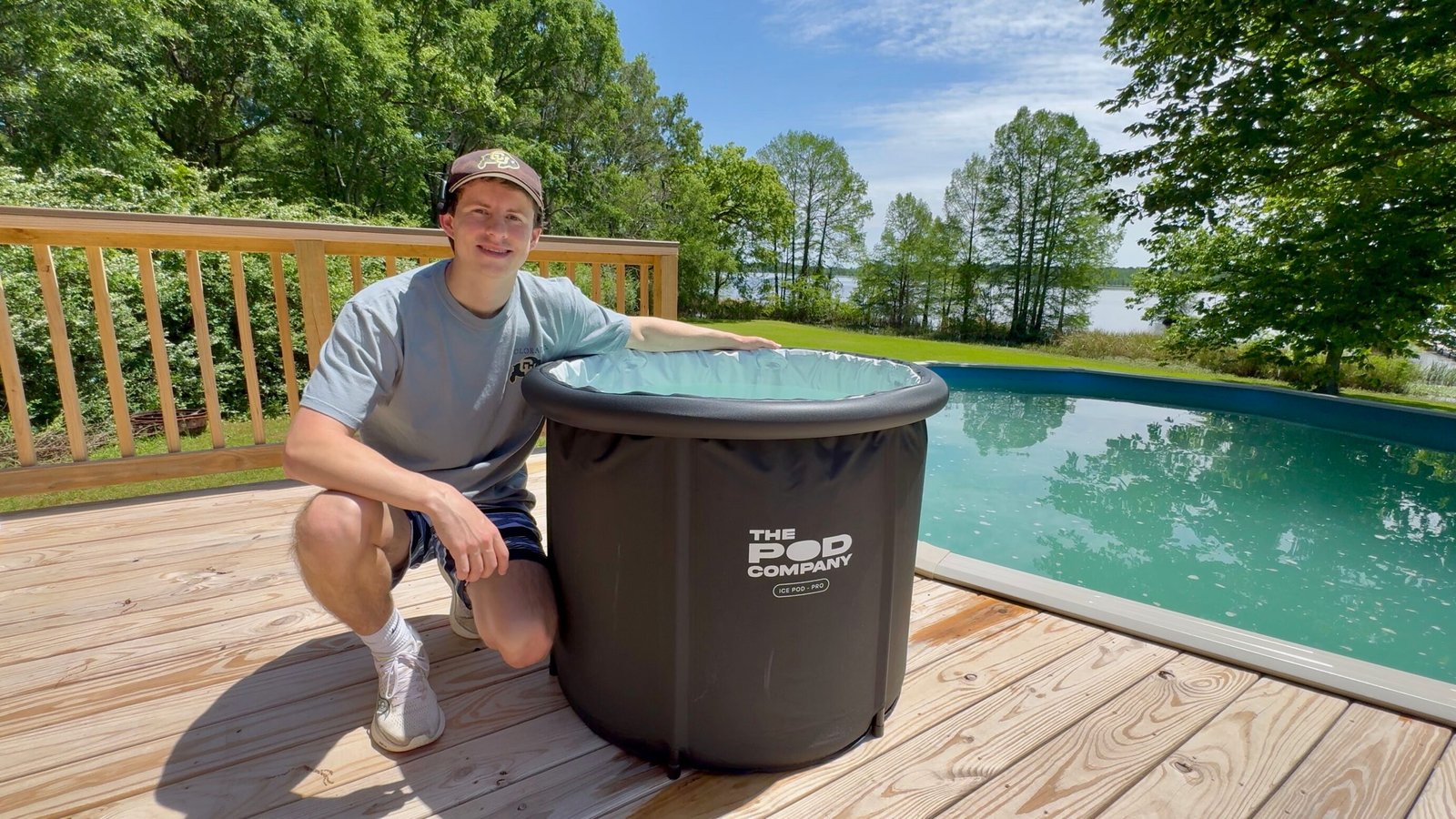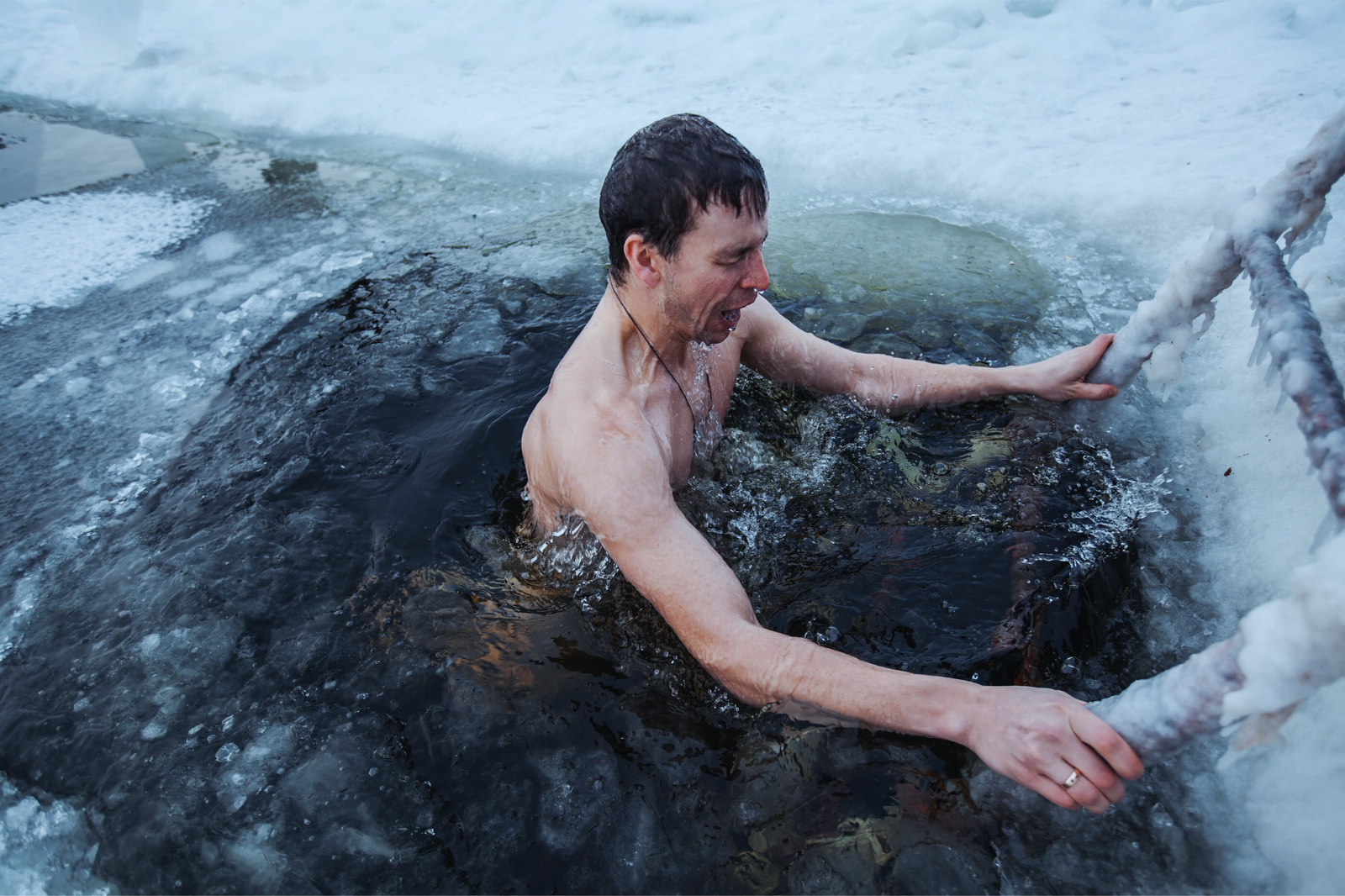5 Different Types Of Saunas: Find What’s Best For You
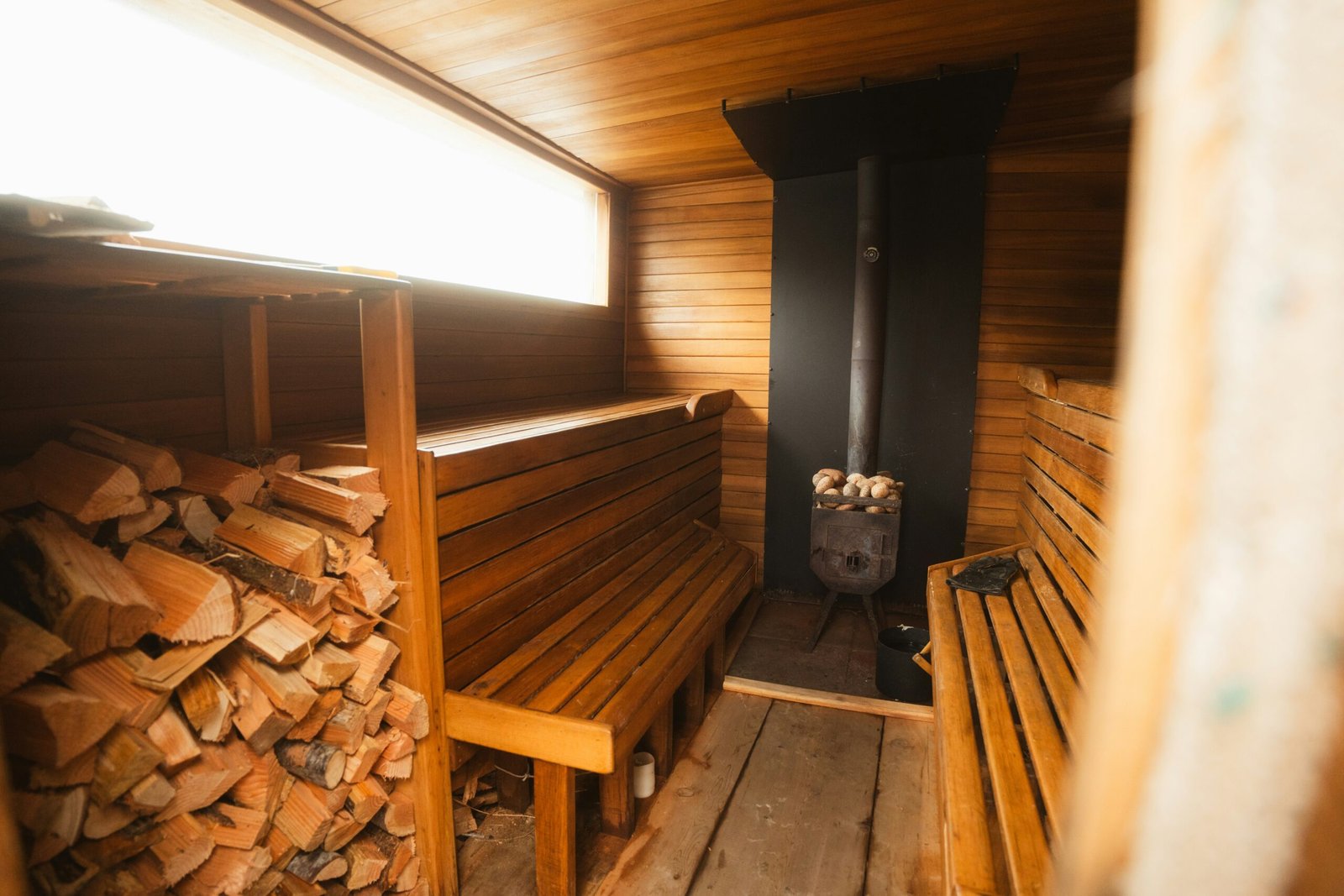
When you think of a sauna, you might picture a wooden room with steaming rocks, but saunas come in many forms.
Different types, from traditional smoke models to modern infrared versions, offer unique experiences and benefits.
Understanding these options can help you find the proper sauna for your needs. Let’s take a closer look at what each type offers.
The 5 Types of Saunas
1. Electric Saunas
Electric saunas are the go-to choice for most gyms and homes. They use an electric stove to heat rocks, creating a dry, intense heat that ranges from 150-190°F (66-88°C).
With a simple switch, you can control the temperature and even add steam by splashing water on the rocks.

These saunas come in all shapes and sizes, from tiny personal boxes to huge 12-person barrels. They’re usually made of cedar wood and can be installed indoors or outdoors.
Gyms and spas love them because they’re super easy to maintain – the lack of moisture means less chance of mold growing.
The biggest perk is how quick and easy they are to use. They heat up to your set temperature in 10-15 minutes.
Best suited for:
- People who want easy maintenance
- Those who prefer precise temperature control
Pros:
- Quick heating (10-15 minutes)
- Precise temperature control
- Easy to maintain
- Wide range of sizes and styles
- Low moisture reduces mold risk
Cons:
- Multi-person units are expensive
- Initial installation can be costly
- Limited authentic sauna experience
Cost:
- Small personal unit: $2,500-$3,500
- Medium home unit: $4,000-$6,000
- Large custom installations: $7,000-$15,000
2. Wood-Burning Saunas
Wood-burning saunas bring a classic, rustic feel to heat therapy. Using a metal stove (called a kiuas in Finnish), you burn woods like cedar, pine, or oak to heat rocks.
The result is a dry heat around 150-190°F (66-88°C), with the bonus of a crackling fire and wood smell that electric saunas can’t match.
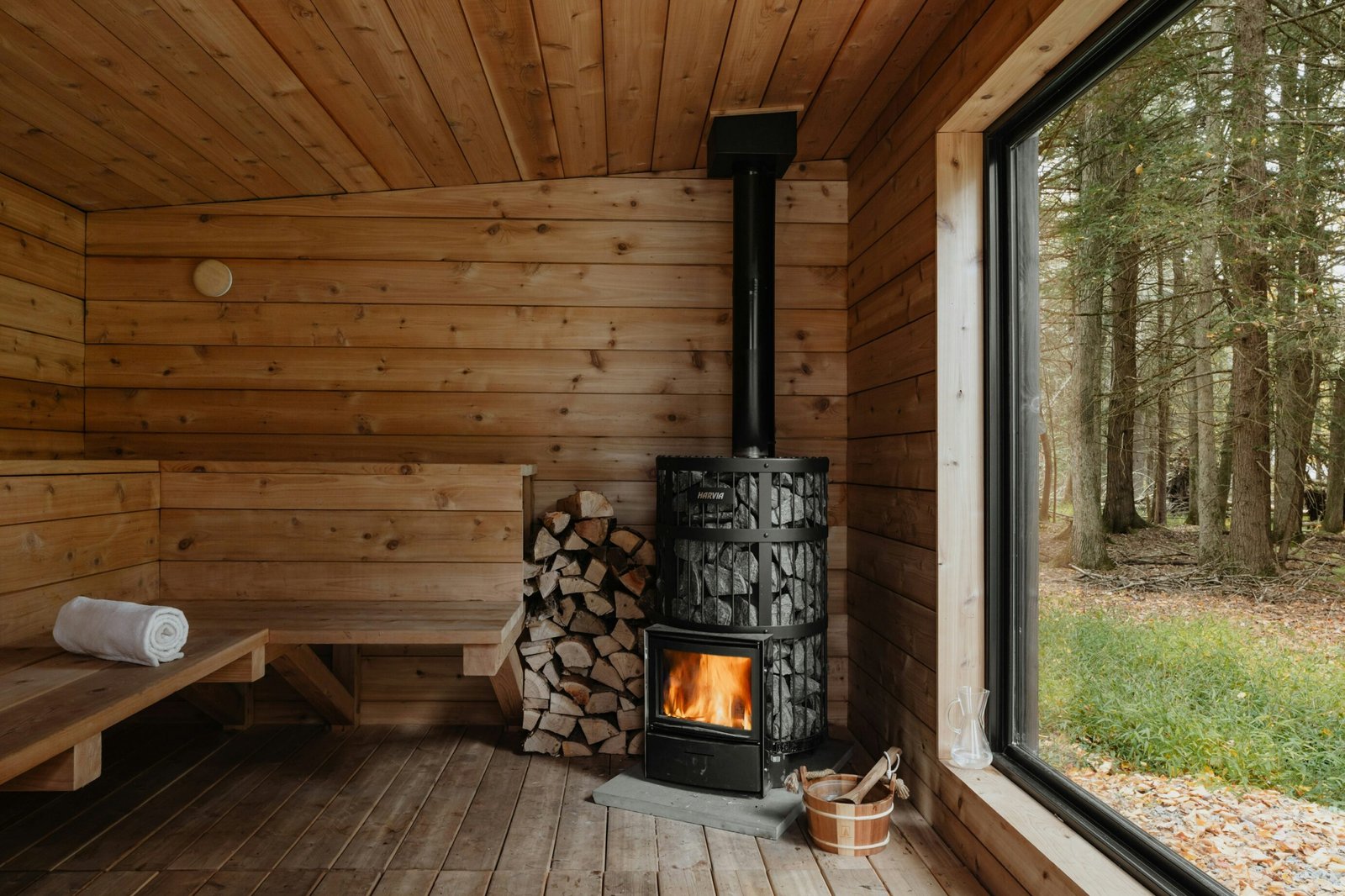
This type of sauna requires more skill and effort. You’ll need to build and tend the fire, maintain a consistent temperature, and clean out ashes after each use.
The process is more hands-on, with a chimney adding to the aesthetic and helping to vent smoke. You can still create steam by splashing water on the hot rocks, just like in electric saunas.
Best suited for:
- Outdoor enthusiasts
- Traditional sauna lovers
- People with access to wood supply
- Those who enjoy a more hands-on experience
Pros:
- Authentic sauna experience
- Natural wood aroma
- Aesthetic appeal with crackling fire
- No electricity required
- Can be built in remote locations
Cons:
- Requires constant fire maintenance
- Inconsistent temperature
- Labor-intensive
- Requires wood chopping and storage
- Smoke and ash management
Cost:
- Initial Installation: $3,000-$7,000
- Wood Costs: $200-$500 per season depending on local wood prices
3. Smoke Saunas
Smoke saunas are the most traditional and rare sauna experience. Primarily found in Northern European countries like Finland, Lithuania, and Estonia, they are more of a cultural artifact than a practical home option.
They work differently from other saunas—there’s no chimney to ventilate smoke. Instead, the fire fills the room with smoke, which is then aired out before use.

Preparing a smoke sauna is a serious commitment. It typically takes 6-8 hours to get ready, and they’re usually located in outdoor cabins.
The fire is completely extinguished before use, and the sauna is designed to retain heat for hours afterward.
These saunas are so rare that only a handful of authentic ones remain, mostly in rural areas.
Best suited for:
- Cultural enthusiasts
Pros:
- Extremely authentic
- Unique heat retention properties
- Exceptional heat quality
Cons:
- Extremely time-consuming
- Requires significant skill
- Not practical for regular use
- Rare and hard to find
- 6-8 hours preparation time
Cost:
- Varies widely (typically custom/historical installations)
- Significant labor and time investment
4. Infrared Saunas
Infrared saunas represent a completely different approach to heat therapy. Instead of heating the air, they heat your body directly with infrared light waves.
This means lower temperatures – typically between 80-150°F (27-66°C) – and a gentler, broader heat coverage.
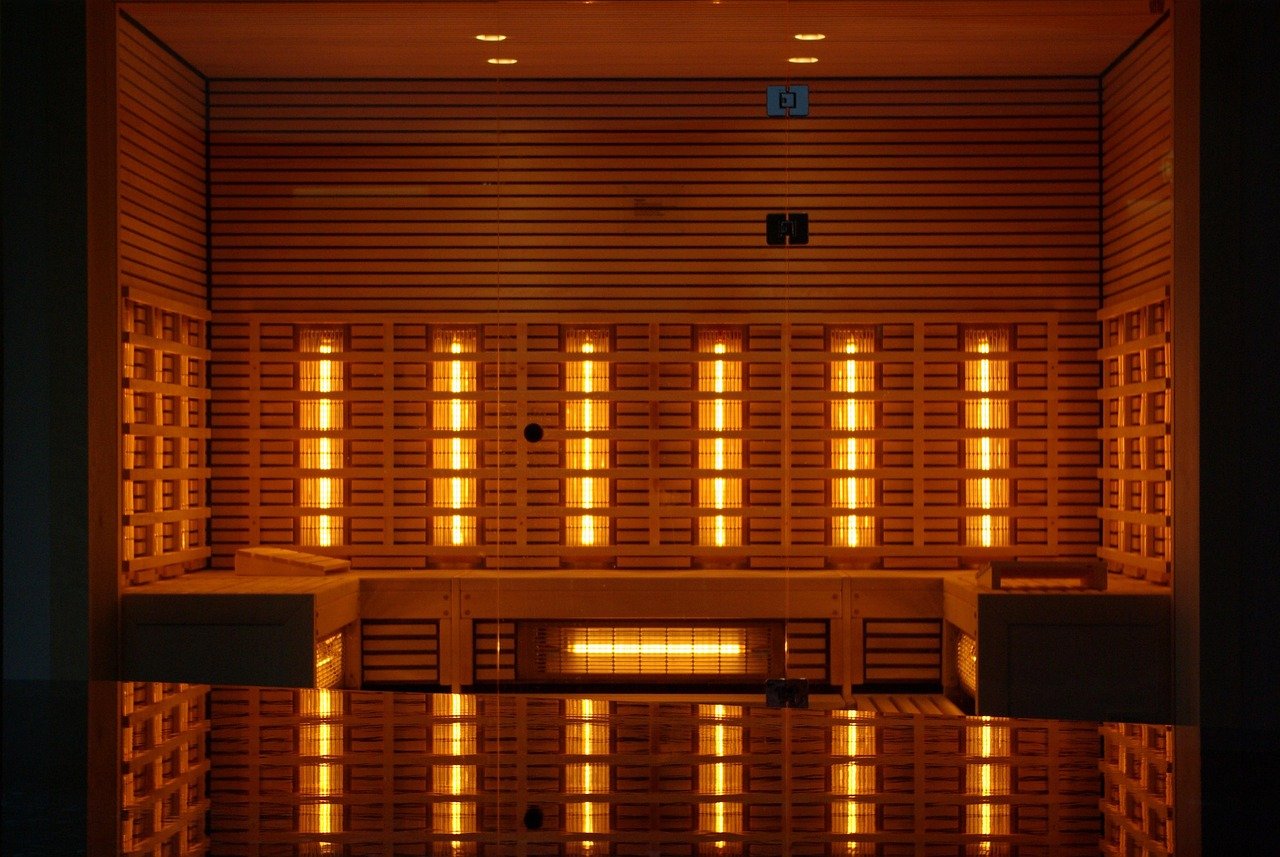
There are two types of infrared light: far-infrared, which heats the body’s surface, and near-infrared, which penetrates deeper into tissues.
These saunas are typically portable or collapsible, making them easier to use and move around. The lower temperatures mean you can stay in longer, and they consume less energy than traditional saunas.
Best suited for:
- People with limited space
- Those seeking gentler heat therapy
Pros:
- Lower operating temperatures
- Longer, more comfortable sessions
- Portable and easy to install
- Lower energy consumption
- Direct body heating
Cons:
- Less intense heat experience
Cost:
- Portable units: $400-$3,000
- Home installation: $2,500-$5,000
- Professional-grade units: $3,000-$6,000
5. Steam Saunas
Steam saunas create a totally different heat experience. A steam generator boils water and blasts steam into the room, quickly reaching 100% humidity.
The temperature stays around 90-130°F (32-54°C), but the high humidity makes it feel much hotter – almost like you’re underwater.

You’ll find these most often in gyms, spas, and hotels. They’re made of tile, glass, and plastic, which makes them easier to clean. However, the high moisture means you’ll need to clean them regularly to prevent mold and mildew.
Due to the intense humidity, most people can’t stay in as long as other types of saunas.
Best suited for:
- Quick sessions
Pros:
- Good for skin
- Helps with respiratory issues
- Quick to heat up
- Easy-to-clean surfaces
- Available in most gyms and spas
Cons:
- High mold and mildew risk
- Requires frequent cleaning
- Can feel overwhelming
Cost:
- Residential steam shower: $2,500-$6,000
- Commercial steam room installation: $5,000-$15,000
- Maintenance and cleaning: Ongoing expense
Physical Benefits of Regular Sauna
Regular sauna sessions can help you feel better and stay healthy. Key physical benefits include:
- Better blood flow
- Reduced soreness and inflammation
- Boosted immune system
Sweating helps push out toxins, and your muscles relax almost immediately. Athletes use saunas to help their bodies recover faster after tough workouts.
Mental Benefits of Regular Sauna
Your brain loves saunas, too. Sauna sessions can:
- Eased stress and anxiety
- Improved sleep
- Improved memory
- Increased cognitive function
- Increased dopamine and norepinephrine
Stay hydrated, ensure most of your skin is exposed, and cool down for 10-20 minutes afterward to maximize the sauna’s benefits.
Safety
Saunas aren’t for everyone. Some people must be extra careful and talk to their doctor first.
If you have heart issues, are pregnant, struggle with blood pressure problems, or have specific health conditions, a medical professional can give you personalized advice.
Your health and safety should always come first, so take the time to check if saunas are right for your body.
Sauna Etiquette
Saunas are shared spaces. Respecting them is important. Always bring a towel to sit on, and keep the environment clean and comfortable for everyone.
Be mindful of others, keep conversations low, and avoid strong perfumes or colognes. Ask a staff member for guidance if you’re unsure about the specific rules.
Finnish Sauna Traditions
In Finland, saunas are more than therapy. Finns view them as sacred spaces for both physical and social experiences.
Some traditional practices include sitting naked or jumping into cold water or snow immediately after.
International Sauna Customs
Sauna practices vary widely around the world, each with unique traditions and rules.
Germany – Many saunas are clothing-optional.
Japan – Hot springs, called onsen, have strict cleaning rituals that must be followed before entering.
Russia – Steam baths, known as banyas, involve gently beating the body with birch branches to improve circulation and deep cleanse.
Before using a sauna in a new place, be sure to understand its specific customs and expectations.
Sauna Maintenance and Care
Keeping your sauna clean is crucial for a safe experience, and different types of saunas require specific care.
- Electric saunas need monthly surface wipe-downs.
- Wood-burning saunas require ash removal after each use.
- Infrared and steam saunas have unique cleaning needs to prevent bacteria and mold growth.
Regular maintenance includes checking electrical connections, inspecting wooden surfaces for damage, and replacing heated rocks every few years. The sauna should also be kept dry when not in use and ensure good ventilation after each session.
These simple steps will help extend its lifespan and keep it in top condition.
Choosing Your Perfect Sauna
When selecting a sauna, consider your budget, space, and goals.
Think about how much maintenance you want to do and what feels most comfortable. Some people prefer the intense heat of traditional saunas, while others enjoy the gentler warmth of infrared models.
Take your time to research and find the sauna that best matches your needs.
Conclusion
Saunas offer a unique way to relax and support your well-being. From the intense heat of a wood-burning sauna to the gentle warmth of an infrared model, each type provides a different experience.
Understanding these differences can help you choose the best option. Whether you’re looking to relieve sore muscles, reduce stress, or experience a cultural tradition, there’s a sauna that’s right for you.
Leave any questions or concerns in the comments below!
FAQs
Medical Disclaimer
The information contained in this post is for informational and educational purposes only. It is not intended to provide medical advice or to take the place of such advice or treatment from a personal physician. All readers/viewers of this content are advised to consult their doctors or qualified health professionals regarding specific health questions or before embarking on any new health or wellness routine, including saunas and cold plunging. Neither the author(s) nor the publisher of this content take responsibility for possible health consequences of any person or persons reading or following the information in this educational content. All viewers of this content, especially those taking prescription or over-the-counter medications, should consult their physicians before beginning any cold plunging routine or other health or wellness program.


